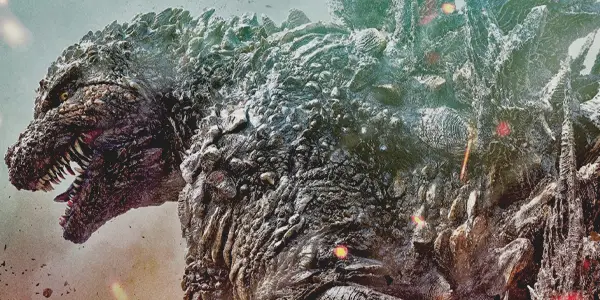Early in Takashi Yamazaki’s Godzilla Minus One — before the titular reptilian beast even appears on screen — a defected Japanese soldier named Koichi Shikishima (Ryunosuke Kamiki) pouts on the shore of Odo Island. He’s landed his plane there as a means to escape the inevitability of his fate as a kamikaze pilot, something most men on the island, including the lead mechanic Tachibana (Munetaka Aoki), find despicable. But one mechanic approaches Koichi and assures him that he’s on his side, saying, “Why honor an order to ‘die honorably’ when the outcome is already so clear?”
Which is perhaps an ironic way for Toho Studios’ 33rd feature Godzilla film to open, especially considering the fact that just minutes later, the terrifying Japanese Kaiju emerges from the sea and wipes out the entire island, save Koichi and Tachibana. It could be argued that the outcome of every Godzilla film is clear from the jump: the monster appears, terrorizes cities, and eventually, is defeated… for the time being. And it would be plenty fair to say the Minus One follows that framework, though it would be just as unfair to say it strictly limits itself to those beats.
Instead, Minus One goes beyond the unthinkable carnage Godzilla can inflict and delves into how its presence impacts the daily lives and mental states of the people it terrorizes, as well as the socio-and-geopolitical consequences Japanese citizens must bear simply due to the unfortunate fact that this (fictional) creature can’t seem to quit their country. Yamazaki — who wrote, directed, and co-handled visual effects on this, his 20th feature — deftly moderates the typical all-out warfare of a run-of-the-mill Godzilla film so as to layer in these beats audiences won’t be used to seeing in the genre, but shouldn’t be deterred by either.
A different breed of monster movie
That isn’t to say that Minus One eschews said annihilation entirely; as mentioned, within minutes, an entire island is wiped out, and that’s only the first of Godzilla’s escapades over the ensuing two hours. But this is more of a human story than most modern audiences would expect, probably due to the schlock and awe approach of Warner Bros.’ attempts at reviving the iconic monster in recent years — not to mention their insistence on pitting it against its equally-enormous gorilla counterpart. (Or are they teammates now? I can’t keep up.) Our main human in this tale, the aforementioned Koichi, spends the years following his first encounter with Godzilla wracked with PTSD, both because of what he’s seen and what he hasn’t. He’s also ravaged by guilt for not having fulfilled his duties as a suicide bomber, his survival serving as a daily reminder of his failure to, well, die like the rest of his fellow soldiers did.
Finding one’s self amidst rubble
This work, however dangerous, allows Koichi to better adapt to his rubbled surroundings and his two found families of sorts, building up his world from within the confines of his soul as it expands on the outside, too. He makes good money, enough to have the shell of a home he returned to after the war refurbished, enough to buy a motorcycle. The man who was so consumed by guilt for having survived a job that required him to perish suddenly begins to find reasons to live again.Does content like this matter to you?
Become a Member and support film journalism. Unlock access to all of Film Inquiry`s great articles. Join a community of like-minded readers who are passionate about cinema - get access to our private members Network, give back to independent filmmakers, and more.